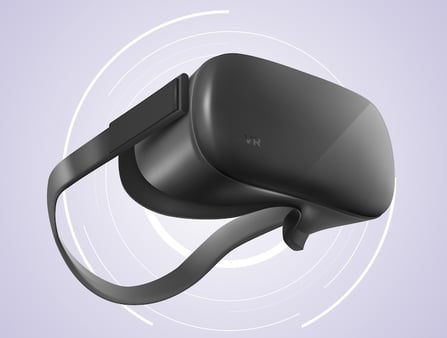As Virtual Reality (VR) expands beyond home entertainment into business and healthcare sectors, ensuring a robust WiFi connection becomes increasingly critical. Whether it's for training simulations in a corporate setting or for advanced medical procedures, a lag-free VR experience is essential. This is where a WiFi Scanner becomes an invaluable tool for optimizing your network.

WiFi Scanner: The Technical Advantage
A WiFi Scanner is more than just an app; it's a comprehensive tool that analyzes the WiFi environment. By providing detailed insights into frequency usage, signal strength, and channel saturation, it guides you in configuring an optimal network setup for high-demand applications like VR.
Understanding Frequencies: 2.4 GHz vs. 5 GHz
VR requires a stable and high-throughput connection. Access points offer dual-band frequencies: 2.4 GHz and 5 GHz. The 2.4 GHz band provides wider coverage but is prone to congestion, while 5 GHz offers faster data rates with shorter range. A WiFi Scanner can help you assess which band is more suitable for your VR setup, considering both congestion and coverage needs.
Channel Optimization: Minimizing Interference
Each WiFi band is divided into channels. In congested areas, like office buildings or hospitals, certain channels can become overpopulated, leading to interference and reduced performance. A WiFi Scanner identifies the least congested channels, allowing you to configure your WiFi network to the optimal channel, thereby enhancing VR performance.
Maximizing Data Rates for VR Applications
For immersive and responsive VR experiences, especially in professional settings, high data rates are crucial. This is where channel width becomes important. A wider channel (e.g., 40 MHz or 80 MHz in the 5 GHz band) can significantly increase throughput. However, it's a balance; wider channels are more susceptible to interference. Use a WiFi Scanner to determine if your environment can support wider channels without compromising stability.
Signal Strength and Placement: Key for VR Reliability
In VR, particularly in healthcare where precision is vital, consistent signal strength is mandatory. A WiFi Scanner helps in mapping out signal strength across different areas. For large spaces or environments with physical obstructions, strategically placing multiple access points, or implementing a mesh network, can ensure uniform coverage.
Expanding Coverage: Ensuring VR Accessibility
In professional environments, VR setups might span across multiple rooms or large areas. A WiFi Scanner can identify dead zones where signal strength drops, guiding the placement of additional access points or extenders to ensure seamless VR experiences throughout the facility.
Embracing WiFi 6E for Advanced VR Headsets
If your VR headset supports WiFi 6E, leveraging the new 6 GHz band can be highly beneficial. This band, less crowded and capable of higher throughput, can significantly enhance VR performance. Considering adding WiFi 6E (6 GHz capable) access points to your network can provide a substantial boost, particularly for data-intensive VR applications in complex environments.
Conclusion
For both home and professional use, especially in rapidly evolving fields like healthcare, optimizing your WiFi network is a key step in ensuring a successful VR experience. Utilizing a WiFi Scanner to analyze and adjust your network settings can lead to significant improvements in performance. By understanding and configuring your network's frequencies, channels, data rates, and coverage, and considering the addition of WiFi 6E capabilities for compatible VR headsets, you can create a stable and efficient environment suitable for the demanding needs of modern VR applications.


